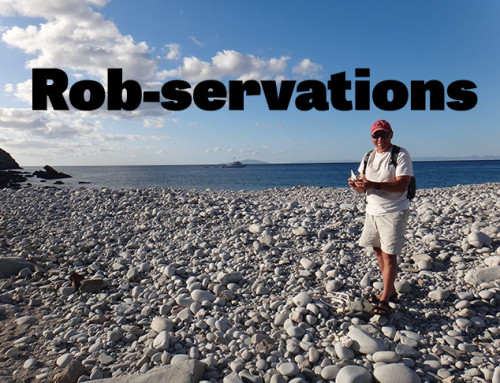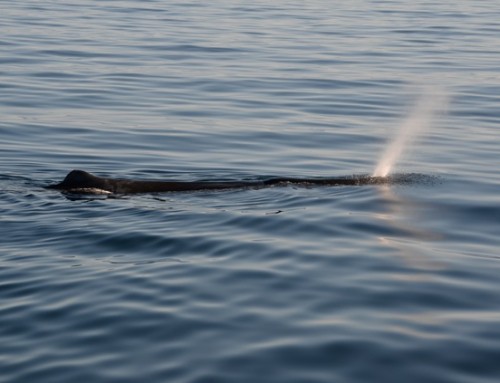For the first nine blogs in this series, we’ve been focusing on various species of cetaceans (whales and dolphins). Another major group of marine mammals is the pinnipeds, a group that includes seals, sea lions, fur seals, and the walrus. Of the 33 species of pinnipeds in the world, four can be seen on a regular basis in Baja: harbor seal, northern elephant seal, California sea lion, and Guadalupe fur seal.
The group Pinnipedia is a taxonomic group that is embedded within the mammalian order Carnivora. The order Carnivora is the order that contains such species as lions, tigers, and bears, as well as dogs, cats, skunks, otters, raccoons, and hyenas, among others. The inclusion of the pinnipeds within the order Carnivora tells us that the closest relatives of the pinnipeds are the members of the Carnivora, rather than other marine mammals or other orders of mammals. More specifically, the pinnipeds are more closely affiliated with the “arctoid carnivores” (a group that includes weasels, otters, and bears) as opposed to the “aeluroid carnivores” (a group that includes mongooses, hyenas, lions, leopards, cheetahs, etc.).
The pinnipeds are comprised of three families: Phocidae (18 species), Otariidae (14 species), and Odobenidae. The family Odobenidae contains just one species, the walrus. The walrus is perhaps the most recognizable of all the pinnipeds, mostly due to the large tusks. Found only in the Arctic and sub-Arctic, we do not see any walruses in Baja. However, it is interesting to note that during the Middle Miocene and Late Miocene epochs (16 – 5 million years ago), a time of great radiation of pinniped lineages, there were many more species of odobenids. Some of these Miocene odobenids lived along California and Baja. Paleontologists have discovered many fossils of Miocene “walruses” in sandstone formations in Baja.
The family Phocidae includes the harbor seal and northern elephant seal. Phocids (i.e., members of the family Phocidae) have several characteristics in common. Phocids have relatively small front flippers that are of limited use on land. Their hind flippers cannot be rotated beneath the seal for body support or land locomotion; instead, the hind flippers extend back from the animal’s body. When we see harbor and elephant seals on the beaches of Baja, they hunch along like giant caterpillars.
When swimming, phocids extend their hind flippers behind them and splay out the digits, forming a tail-like structure. The seals then undulate their bodies in a sinusoidal fashion, propelling them forward in what is known as “axial locomotion.” Phocids are sometimes called “earless seals”, a phrase I do not like. Phocids most certainly do have ears. What phocids lack is the earflap, found in most mammals, surrounding the outside ear opening. If you are close enough (which you are in Baja!) to see the side of the head of a phocid seal, you can easily see the ear opening behind the eye.
The family Otariidae includes the California sea lion and Guadalupe fur seal. In contrast to phocids, otariids have large front flippers, large enough to support some of their body weight while on land. Their hind flippers can be rotated under their body, again supporting some of the body weight. These features of the front and hind flippers allow otariids to walk on land in a quadrupedal fashion. Because of this ability, we often see sea lions and fur seals climbing rock faces in search of resting spots, areas not accessible to ungainly phocids.

Guadalupe fur seals on the rocks at Isla San Benito. Notice rotation of front flippers. Photo A. Cornick
In water, otariids use their large front flippers in an almost-flapping sort of motion to thrust themselves through the water. We get an up-close view of this “appendicular locomotion” when we snorkel with sea lions at Los Islotes, a rocky outcrop hosting a sea lion colony in the southern Gulf of California. Like most other mammals, but in contrast to phocids, otariids have an earflap around their ear opening.
This feature is one of the more easily discernible characteristics allowing us to separate otariids from phocids.
Unlike cetaceans, which spend their entire lives in water, pinnipeds “haul out” onto land for resting and reproduction. To avoid predators and human disturbance, pinnipeds tend to haul out on islands and isolated beaches. During our Searcher Natural History Tours to Baja, we visit at least three pinniped haul-out sites. On our first full day in Baja, we sail past the Todos Santos Islands, where, from the Searcher, we often can observe some hauled out elephant seals, harbor seals, and sea lions. The next day, we spend much of the day hiking around West San Benito Island.

Rob Nawojchik guides Searcher passengers around the elephant seal haul-out areas on Isla San Benito.
The main attraction at San Benito is the elephant seal colony, but we have also seen the other three species of Baja pinnipeds here.
Later in the trip, we visit Los Islotes to view California sea lions both above and below the water.
In upcoming blogs, we’ll focus on each pinniped species in more detail.








